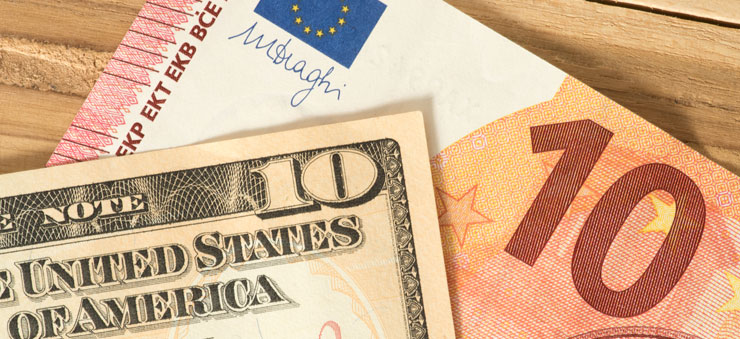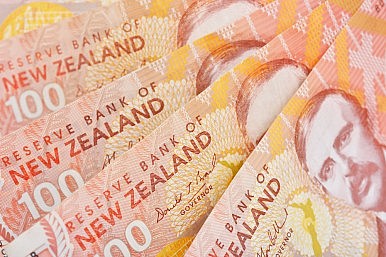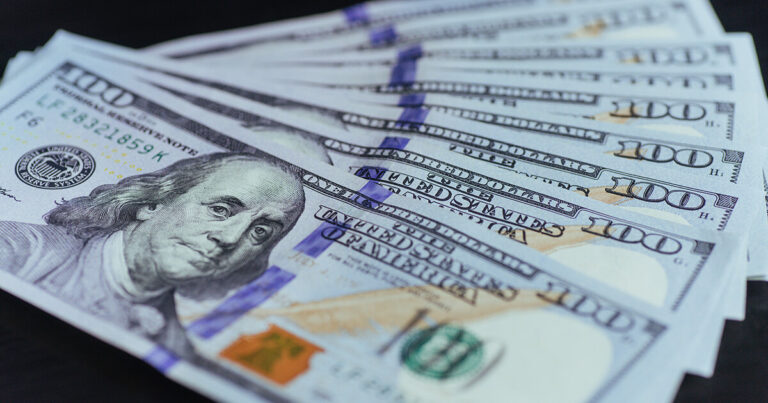
The world trade market fluctuated wildly over the past week, signaling a return of volatility as markets reacted to an environment of extreme uncertainty. Global negative sentiments drove traders to the greenback’s safety, leaving equity and commodity assets in limbo by the end of the week.
Welcome to this weekly wrap – and discover how the g7 currencies reacted to the fundamentals that affected the market.
The Fundamentals
Coronavirus News
The ongoing covid 19 vaccinations rollout and restrictions measures have resulted in reduced infections, hospitalizations and deaths. As a result, there is a high optimism of economic rebound and job creations.
Nevertheless, many economies struggle under the weight of covid 19 second wave infection and the new variants.
US Treasury Yield
US treasury bonds continue to skyrocket, creating negative sentiments globally, which fueled risk aversions. The high yields came amid expectations of additional stimulus packages. This Reflation trade also pushed up yields in the Eurozone and Australia.
Economic Update
The g7 economies posted economic data which affected their respective currencies. However, the economic updates could not withstand the skyrocketing treasury yields.
Fx Oil Forecast

As earlier predicted, the fx oil forecast price soared in the week, boosted by the Texas refinery restart and positive sentiments. Winter had resulted in an oil refinery reduction in the US.
Geopolitics
“America is back” that’s the message from Joe Biden signaling that America is serious about re-establishing international relations for economic development, climate change, pandemics and global peace.
Top on Joe Biden’s in-tray is the Iranian nuclear deal. Others include Myanmar’s military coup, China-US trade wars, and establishing relations with Saudi Arabia.
G7 Currency Review and Economic Performance
Table: g7 performance summary
| Currency pair | 22nd Feb | 28th Feb | average | Percentage change | remarks |
| USD | 89.999 | 90.882 | 90.271 | 0.574 | increase |
| GBP/USD | 1.4061 | 1.3932 | 1.4051 | 0.5851 | drop |
| EUR/USD | 1.2154 | 1.2074 | 1.2143 | 0.3549 | drop |
| USD/CHF | 0.8960 | 0.9082 | 0.9040 | 1.3390 | increase |
| USD/JPY | 105.06 | 106.58 | 105.79 | 1.09 | increase |
| USD/CAD | 1.2610 | 1.2739 | 1.2609 | 1.0230 | increase |
| AUD/USD | 0.7915 | 0.7705 | 0.7874 | 2.0841 | drop |
| NZ/USD | 0.7328 | 0.7233 | 0.7341 | 0.9721 | drop |
USD Riding High on Treasury Yields
LAST WEEK, the US dollar gained strength on economic updates, treasury yields, and US-China trade wars under Joe Biden’s administration. Investing.com data show the dollar registered a whopping 0.83% increase on Friday that safely delivered the dollar’s overall gain.
The skyrocketing treasury yields further uplifted the greenback rally on Thursday. Also, the dollar took advantage of the high optimism that America will emerge from the coronavirus pandemic stronger than other g7 economies.
After two consecutive weeks of trading in the red, the greenback was back into the green, increasing by 0.57%, closing the week at 90.879. This impressive performance came on the backdrop of the last drop of 0.13%.
In the first half of the week, consumer confidence in the US improved, uplifting world trade market optimism on economic recovery efforts. Towards the end of the week, the US posted positive economic updates. Initial weekly jobless claims dropped from 841k to 730k, with the GDP expanding by 4.1%.
Personal spending increased by 2.4% to reverse a previous decline of 0.4%. Likewise, inflationary pressure also increased, albeit marginally, from 1.4% to 1.5%. Turning to the monetary upfront US FED chair, Jerome Powell tried to calm the market over Thursday and Friday’s inflationary worries. However, his efforts were short-lived because the dollar grew stronger.
GBP USD Fx

In the last week of February, the sterling pound weakened by 0.59%, closing at 1.3933. In the week before, the Pound had rallied by 1.21%. Riding on the back of good economic updates, the Pound started the week well, but global risk sentiments pulled it down later in the week.
Claimant counts improved by 20k, reversing a previous drop of 20.4k. The unemployment rate also improved, though marginally from 5.0% to 5.1%.
However, the economic updates did not support gbp usd fx much, leaving coronavirus news’s performance. The vaccination rollout and plans to ease lockdown measures leveraged the Pound early in the week.
EUR USD Trend

Eurozone experienced a busy week on the economic calendar with Germany and French economic updates in focus. In Germany, both consumer and business confidence supported the euro early in the week.
According to world trade market analysis, more support for the euro came from Germany’s 4th quarter GDP, which was significantly better than earlier projected. At the end of the week, economic updates from France disappointed eur usd trend. France’s economy shrank worse than earlier projected, with consumer spending spiraling downward.
Ideally, the fundamentals should have uplifted the euro, but risk aversion measures left the euro in the red. Early in the week, the European Central Bank President Christine Lagarde showed the Bank was monitoring bond yields closely. Her comments attempted to calm world trade market jitters caused by reinflation that could reduce personal spending and impact central bank monetary policy.
By the end of the week, the euro had dropped by 0.36% to close at 1.2075 to the dollar. In the previous week, the euro had fallen slightly by 0.01%.
USD/CHF
The Swiss franc took a dive in the last week of February, losing its safe-haven status in the eyes of some forex traders shedding off 0.9094%.
In Switzerland, the import and producer price index improved in January by 0.3% compared to December. The Swiss franc was also hard hit by the high bond yields.
For the first time since 1975, the Swiss economy shrank by 2.9% but still better than an earlier projection of 3.2%.
USD/CAD
It was practically quiet on the Canadian economic calendar except for the RMPI numbers released on Friday. The RMPI numbers impressed, improving by 5.7% in January, after a 3.5% increase in December. However, the positive RMPI statistics did not uplift the Canadian dollar from the red.
According to Investing.com, Lonnie started the week strong, even reaching a high of 1.24679 before tumbling down. The substantial gain of the loonie was boosted by improved crude oil prices in the world trade market.
The tumble resulted in a 0.98% drop of the Lonnie closing 1.2738 to the dollar. Previously, the Canadian currency had rallied strongly by 0.64%.
Bears In Charge
Last week the bears firmly took control of the kiwi dollar and Aussie, reversing previous week’s strong rally. Interestingly, these two currencies performed better than other currencies in the previous week, but they emerged the worst-hit — performing poorly than the rest this time around.
Because of a massive sell-off on Friday, these two currencies lost significantly.
AUD/USD
The Aussie dollar slid by 2.07% to close at 0.7706 to the greenback in the bearish week. On the economic front, Australia posted mixed economic data, which had little impact on the world trade market.
Wage growth improved by 0.6% in the 4th quarter, better than a previous dismal 0.1% increase. Private new CAPEX increased by 3%, with private sector credit improving slightly but weighed down by personal credit reductions.
While the economic updates failed to provide direction for the Aussie, negative sentiments in world market trade on Friday ensured the Aussie closed the week squarely in the red.
New Zealand Currency

In a busy week, the Kiwi Dollar also closed the week poorly, losing 0.90% against the US dollar. Business confidence, retail sales, and trade data negatively skewed downplayed the New Zealand dollar’s performance. Retail sales figures dropped significantly in the 4th quarter.
Similarly, business confidence softened with the annual trade surplus decreasing in January. On the monetary policy upfront, New Zealand’s Reserve Bank (RBNZ), as expected, kept monetary policy unchanged.
This move cushioned the New Zealand currency against significant losses at the end of the week. Investing.com data show that the kiwi dollar rallied strongly at the start of the week in reaction to RBNZ’s monetary policy. It reached a high of 0.74 but dropped as forex traders engaged in risk aversion on Friday.
Japanese Yen Currency News

Except for Friday, there were no economic updates from Japan to provide direction for the yen. On Friday, however, Japan released mixed economic updates on industrial production, inflation, and retail sales.
Industrial production impressed, growing by 4.2%, but retail sales disappointed, dropping by 2.4%. On a positive note, deflationary please eased with Tokyo core consumer prices reducing by 0.3%.
While the fundamentals favored the Japanese yen currency news, it lost due to increased dollar demand over the week. According to Investing.com, the yen fell by 1.06%, closing at 106.57 against the greenback. Previously, the yen had weakened by 0.49%.
Conclusion
While the coronavirus vaccination rollout continues, it is still far before full immunity is achieved. In the meantime, treasury yields, covid 19 news, geopolitics and economic data will drive the world trade market.
Related: Currency Strength Analysis From 15th To 21st Feb, 2021




